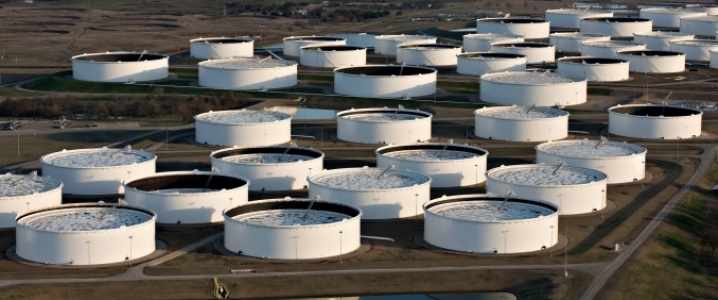Brent Crude
The panelist forecast range for Q4 2019 runs from a minimum of USD 56.8 per barrel to a maximum of USD 106.9 per barrel.
Brent crude oil prices continued to freefall over the last month, with the global oil benchmark sinking to more than a one-year low in late November. On 30 November, oil prices traded at USD 57.5 per barrel, which was down 24.0% from the same day last month. The benchmark price for global crude oil markets was down 9.5% from the same day last year and was 13.8% lower on a year-to-date basis. The announcement in early November that the U.S. would provide waivers to eight countries in order to allow them to continue purchasing Iranian oil after the implementation of U.S. sanctions on 4 November triggered the price spiral, as Iranian exports are now unlikely to fall as much as previously predicted. Moreover, Saudi Arabia, Russia and the U.S.—the world’s top three oil producers—are pumping close to all-time highs, adding further downward pressure on prices. On the demand side, signs have recently emerged of flagging activity. The Chinese economy has been decelerating in 2018, Japan recorded a contraction in the third quarter, while Q3 GDP data for the Euro area was the weakest since 2014. This likely added to investors’ concerns over the future appetite for crude oil. Going forward, our panelists see prices recovering from their current low level following such an abrupt decline, with prices likely now trading below fundamentals. However, significant uncertainty still clouds the outlook. One key factor will be whether OPEC agrees to production cuts—potentially as soon as its meeting on 6 December—in order to support prices. In addition, the possibility of an extension to U.S. waivers on Iranian oil exports and the evolution of the U.S.-China trade spat could have an important bearing on prices. FocusEconomics panelists see prices averaging USD 73.2 per barrel in Q4 2019 and USD 73.6 per barrel in Q4 2020. In light of recent developments, 4 panelists upwardly adjusted their Q4 2019 forecasts compared to last month. Meanwhile, 26 panelists kept their projections unchanged and 6 cut their forecasts.
The panelist forecast range for Q4 2019 runs from a minimum of USD 56.8 per barrel to a maximum of USD 106.9 per barrel.
WTI
For Q4 2019, the maximum price forecast is USD 94.8 per barrel, while the minimum is USD 51.5 per barrel.
West Texas Intermediate (WTI) crude oil prices have hit a 13-month low over the last month on ample supply. WTI crude oil prices traded at USD 50.8 per barrel on 30 November, which was down 23.3% from the same day last month. The price was 16.0% lower on a year-to-date basis and was down 11.5% from the same day last year. On the international scene, the announcement in early November of U.S. waivers for eight countries to allow them to continue importing Iranian oil sent prices crashing in recent weeks. Moreover, Saudi Arabia and Russia continue to pump at near-record highs, adding further downward price pressure. Domestically, comprehensive EIA data for the week ending 23 November showed U.S. crude oil inventories rose by 3.6 million barrels over the previous week, approximately 7% higher than the 5-year average. The 23 November data also marked the 10th consecutive week that inventories have climbed, an indication of elevated supply. On the demand side, despite a strong U.S. economy, global demand for crude oil is likely abating on weaker dynamics in China, the EU and Japan. Prices are likely to rise somewhat going forward following such a sharp decrease in recent weeks which has led to oil looking oversold. Moreover, potential production cuts at the upcoming OPEC meeting in December would support prices. Greater U.S. shale production and softer demand growth, however, will limit any upward movement. For Q4 2019, analysts expect prices to average USD 67.2 per barrel, before increasing slightly in Q4 2020 to USD 68.7 per barrel. In response to recent developments, 18 panelists left their forecasts unchanged for Q4 2019 from last month, 2 of our panelists upgraded their projections, while 8 made a cut to their projections. The spread between the minimum and the maximum oil price forecasts remains relatively wide, with numerous drivers at play in oil markets in recent weeks:
For Q4 2019, the maximum price forecast is USD 94.8 per barrel, while the minimum is USD 51.5 per barrel.
Thank you content partner Focus Economics



